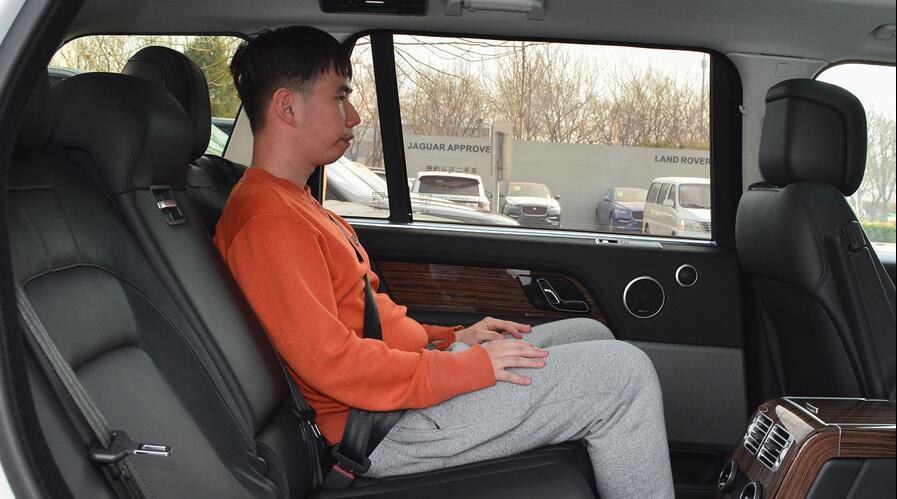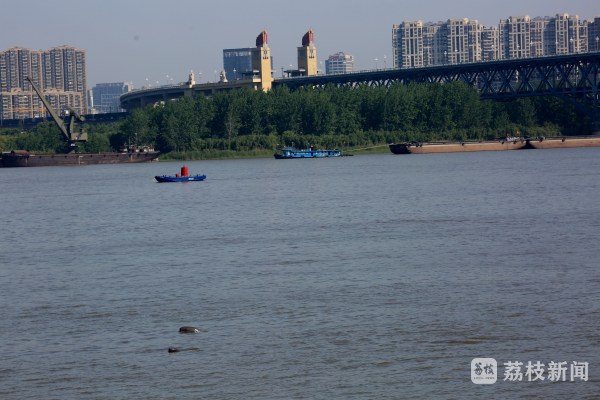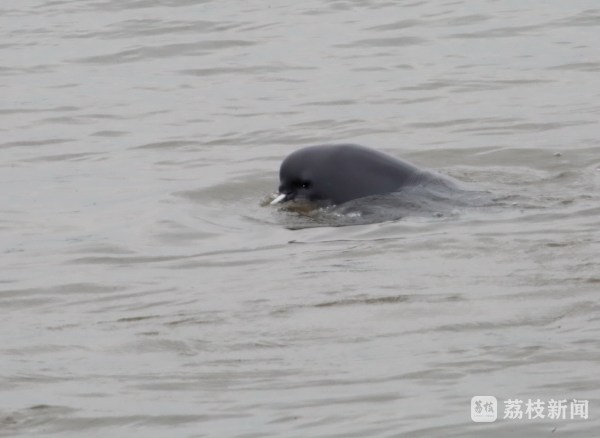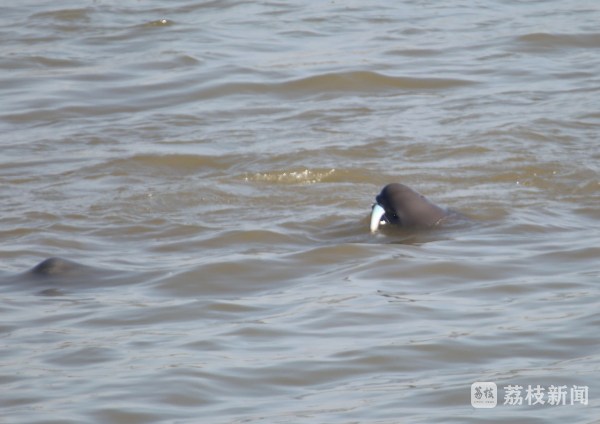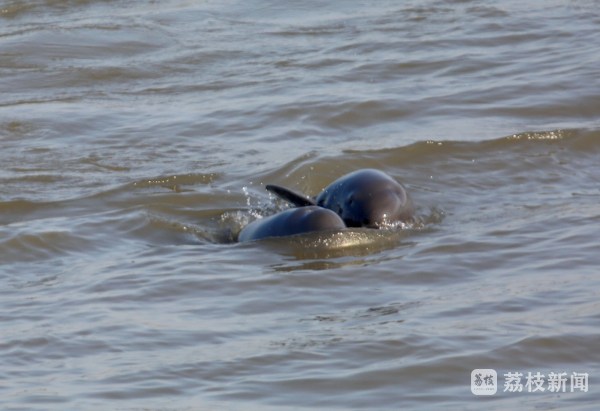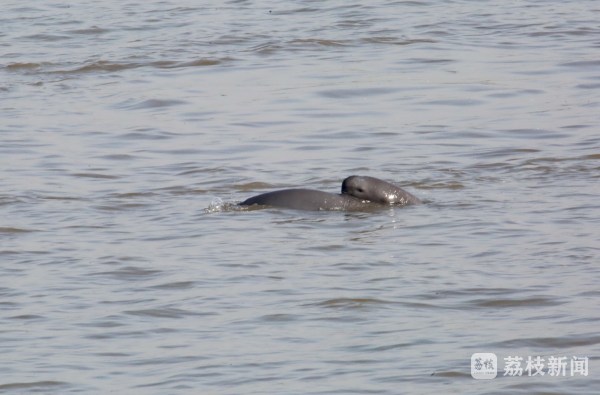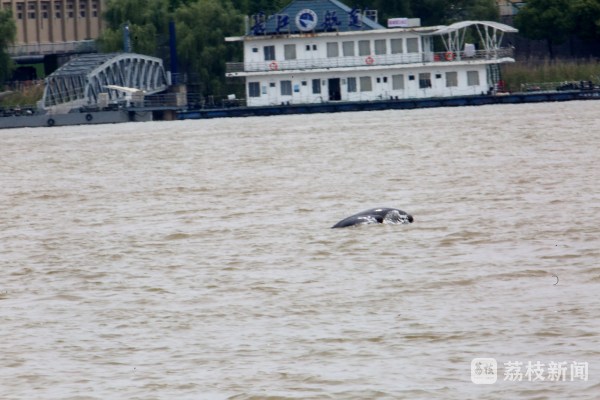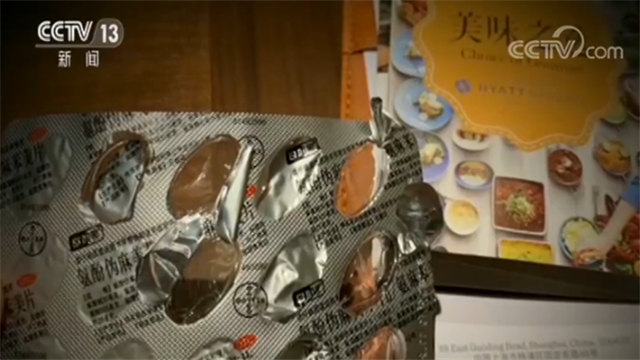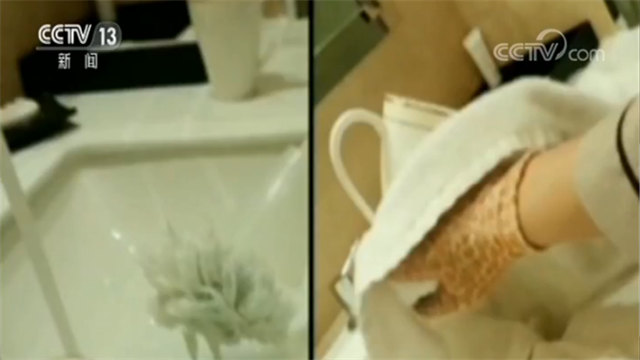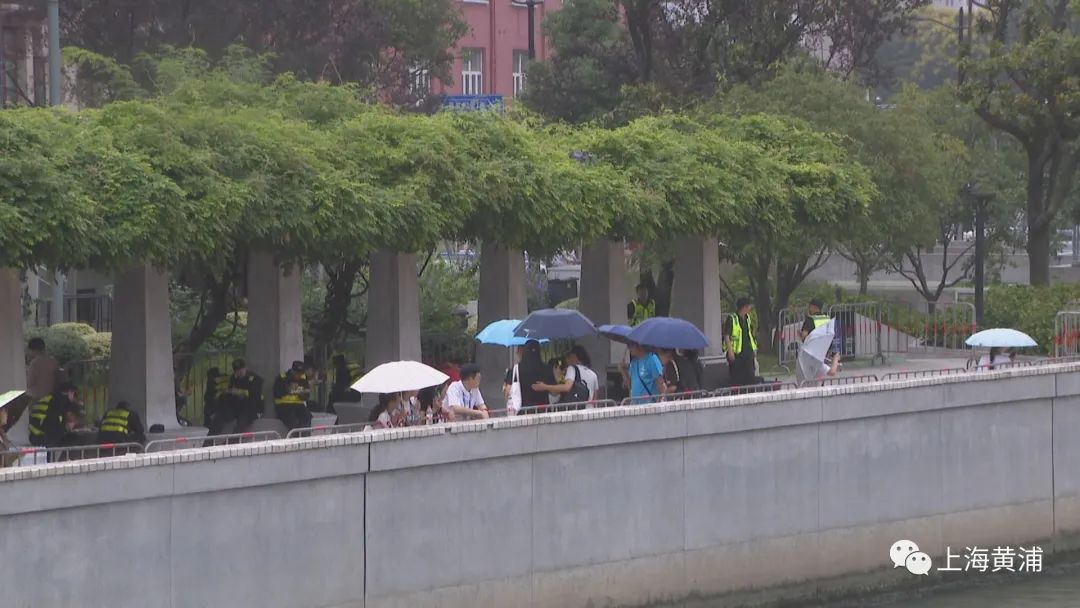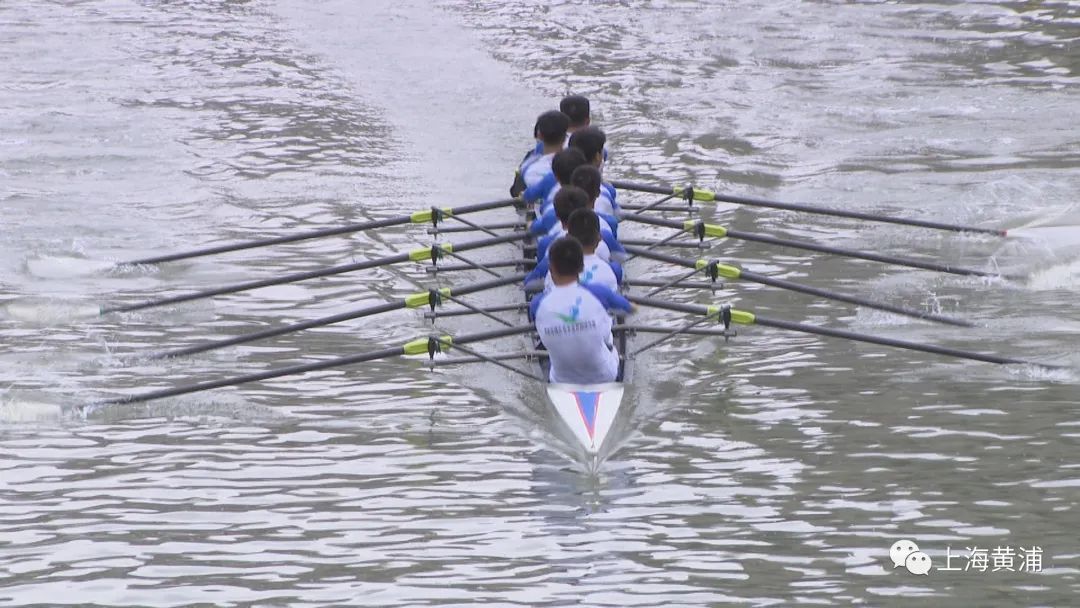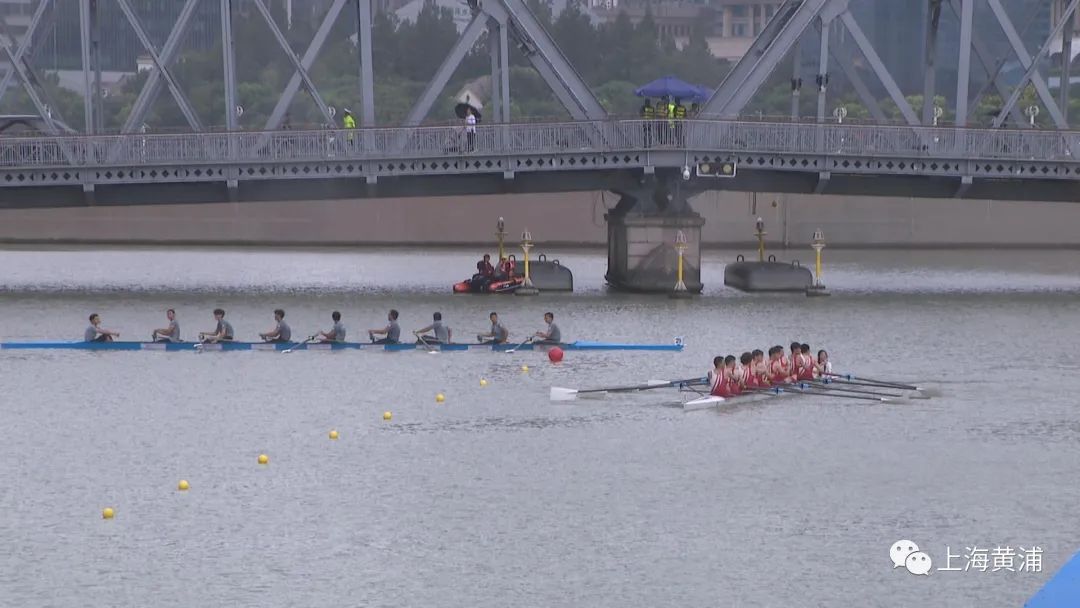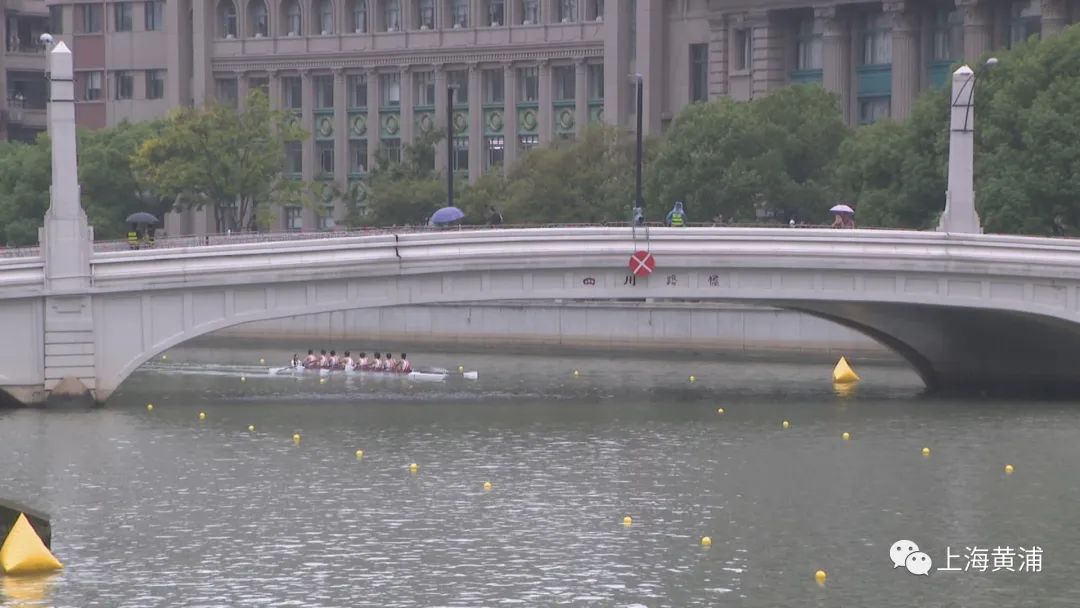
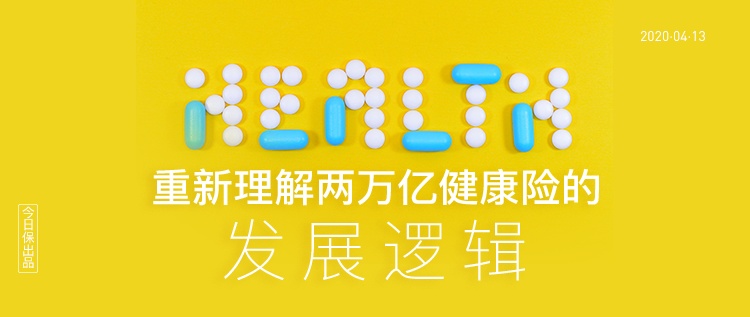
Wen, Feng Pengcheng

How big is the commercial health insurance space in China?
In a joint document issued by 13 ministries and commissions, it is required to realize 2 trillion premiums by 2025.
Swiss Re’s research report in 2019 said that China faced a health protection gap of $800 billion.
Under the great epidemic in 2020, health insurance was the king of C, especially compared with the growth rate of other types of insurance. In January and February of 2020, health insurance continuously surpassed the market and became the second largest type of insurance in the market, making it the main type of insurance to undertake the insurance gap in 2020.
Whether it is the expectation of the highest level, the documents issued by 13 ministries and commissions, the health insurance-related policy dividends continuously issued by the Banking Insurance Regulatory Commission, a trillion-dollar health insurance market is roaring. If there are no accidents, this year’s health insurance is likely to exceed one trillion.
As the insurance field closest to social governance, the future of health insurance is closely related to the trend of medical reform in the huge industry vision. Therefore, it is particularly important to study the medical reform policies, regulatory measures, industry trends and business characteristics in different periods in combination with the staged characteristics of the current health insurance market.
Feng Pengcheng, the author of this paper, has been immersed in this field for more than ten years, thinking: combing the context of 33 policies of China health insurance in the past 38 years in detail, in order to find the experience and enlightenment between commercial health insurance and medical insurance reform.
one
-Insurance Today-
The first step in 38 years: 1982-1997
After 15 years, the premium of 1.5 billion critical illness insurance entered China, and the State Council defined the status of health insurance for the first time
In December 1978, the Third Plenary Session of the Eleventh Central Committee established the policy of reform and opening up and decided to shift the focus of work to socialist modernization centered on economic construction.
In February, 1979, the People’s Bank of China proposed to resume domestic insurance business at the national meeting of branch presidents.
In 1982, with the approval of the Shanghai Municipal Government, China People’s Insurance Company (hereinafter referred to as PICC) launched the "Shanghai Cooperative Workers’ Medical Insurance" on a pilot basis, which was officially implemented in January 1983. This is the first commercial health insurance business after China resumed its insurance business.
Since then, commercial health insurance in China has been launched. After more than 30 years of development, it can be divided into three stages: initial development, professional exploration and multi-level protection.
This is the first stage.
Then the old people’s insurance accelerated the health insurance test:
In 1985, PICC launched supplementary medical insurance and maternal and child health insurance in some areas, and the premium income in that year was 11.78 million yuan, accounting for 3% of the personal insurance business.
In January, 1987, PICC Shanghai Branch cooperated with the Municipal Health Bureau to launch the "Shanghai Suburban Farmers’ Medical Insurance".
In May, 1988, according to the Regulations on Labor Management of Joint Ventures in People’s Republic of China (PRC) and the Regulations on Labor and Personnel Management of Sino-foreign Joint Ventures in Shanghai, the welfare protection for the employees of the joint venture China was carried out, including outpatient and inpatient medical treatment.
In 1990, in line with the family planning policy, PICC launched a series of products such as induced abortion health insurance, birth control insurance and maternal and child health insurance.
In October 1991, PICC began to provide medical insurance for primary and secondary school students and kindergarten children. By the end of that year, nearly 2 million primary and secondary school students and children were insured.
In 1992, more than 70 kinds of medical insurance products were sold nationwide, with a premium income of 310 million yuan.
In the 1990s, the health insurance with safe entry at the beginning of its establishment;
In 1993, Ping An launched 24 group medical insurance products;
In 1994, five personal medical insurance products were introduced;
In 1996, the Ministry of Medical Insurance was first established in China (later renamed as the Ministry of Health Insurance);
In 1997, the hospitalization peace of mind insurance with low premium, high degree of protection and simple claim settlement procedures was introduced. Because it was widely welcomed by the market, the premium in 2000 exceeded 300 million yuan.
After entering the 21st century, there are life insurance companies that make efforts in the field of health insurance:
In 2000, Taikang Life Insurance established the Health Insurance Department, and launched three medical insurance products of "Century Taikang Series" that year. Among them, "Century Taikang Personal Hospitalization Medical Insurance" promises to renew the insurance for the first time in China. The basic responsibilities are general hospitalization insurance and hospitalization insurance for major diseases. Optional responsibilities include "organ transplant insurance (heart, lung, liver, pancreas, kidney and bone marrow transplantation)" and "non-organ transplant surgery insurance".
Looking at the development of health insurance in this period, the emergence of critical illness insurance is a great innovation.
In 1995, China was introduced to critical illness insurance, initially as an additional insurance for life insurance products, which generally covered seven major diseases (malignant tumor, myocardial infarction, stroke, coronary artery bypass grafting, uremia, paralysis and major organ transplantation). In 1996, a main insurance product was introduced to guarantee lifelong liability.
Summarizing the main characteristics of commercial health insurance in this period, there are four aspects:
The first feature: from the perspective of medical insurance reform, the top management expects to meet the medical needs beyond the basic medical security stipulated by the state.
In 1994, the State Council initiated the pilot reform of "Two Rivers" for urban workers. In 1996, the General Office of the State Council forwarded the Notice of the State Commission for Restructuring the Economy and other four ministries and commissions on the opinions of expanding the pilot reform of the medical security system for employees, and put forward that "mutual medical insurance and commercial medical insurance for employees should be developed as a supplement to social medical insurance to meet the medical needs beyond the basic medical security stipulated by the state".
The second feature: from the perspective of market demand, residents’ insurance awareness and income level are low.
In 1997, the per capita GDP was 6,457 yuan. At that time, the medical system of public expense and labor insurance was implemented in urban areas, and the burden of medical expenses was generally low. In rural areas, the rural cooperative medical system still plays a certain role, and residents’ insurance awareness and income level are low.
The third feature: from the perspective of industry supply, the number of competitors in the insurance market has increased, and the pattern of PICC monopolizing the market no longer exists.
Ping An Life Insurance Company of China and Pacific Life Insurance developed rapidly, and Taikang Life Insurance and Xinhua Life Insurance were established one after another. However, generally speaking, the insurance market was in its infancy and its strength was weak. The business was mainly property insurance, and health insurance was not operated as the main business segment, so the effective supply capacity of commercial health insurance was limited.
The fourth feature: from the perspective of selling products, the actuarial pricing ability is poor, and the risk management and control ability is limited. Generally, they are sold as additional insurance, mostly medical insurance products, with relatively simple responsibilities and low level of protection.
Take critical illness insurance products introduced at this stage as an example. At the initial stage of sales, all insurance companies are cautious, with low underwriting amount and strict underwriting policy.
However, critical illness insurance’s unique coverage content was quickly recognized by the market, and various insurance companies also upgraded their products in an all-round way, expanded the scope of diseases, changed additional insurance into main insurance, and extended regular coverage to life.
With the promotion of personal marketing model, products have developed rapidly and sales have soared. In 1997, the premium income of national commercial health insurance was 1.5 billion yuan.
2
-Insurance Today-
The second step in 38 years: 1998-2008
After ten years of professional exploration, the premium was 50 billion yuan. At that time, the Prime Minister even instructed that a professional health insurance company was born.
The main line of medical insurance reform at this stage is: the state has established a basic medical insurance system in an all-round way, and commercial health insurance has accelerated the specialization process.
In December, 1998, the State Council’s Decision on Establishing the Basic Medical Insurance System for Urban Employees was issued, and a new basic medical insurance system for urban employees was established, which indicated that the medical insurance system of free labor insurance implemented in China for more than 40 years was replaced by the new social medical insurance system.
In 2003 and 2007, the state established the new rural cooperative medical system for rural residents and the basic medical insurance system for urban residents for non-employed residents.
At the same time, rural medical assistance and urban medical assistance systems were established in 2003 and 2005 respectively. So far, China has established a basic medical insurance and medical assistance system covering urban and rural areas.
Basic medical insurance and medical assistance policies
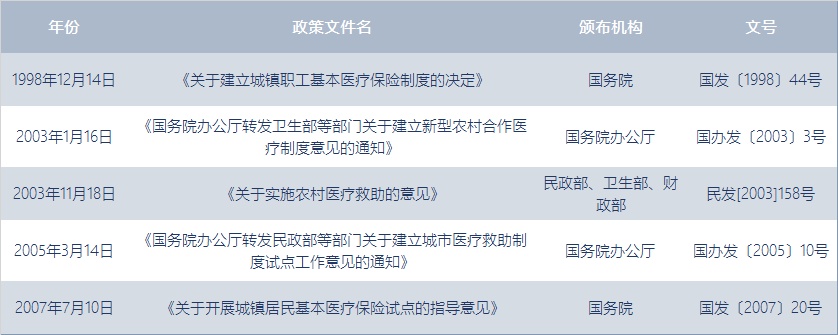
The number of employees participating in medical insurance increased from 19 million in 1998 to 200 million in 2008, the number of participants in the new rural cooperative medical system exceeded 800 million, and the number of urban residents participating in medical insurance exceeded 100 million.
By 2008, the total number of people participating in the three basic medical insurance systems in China reached 1.133 billion, and the participation rate of basic medical insurance reached 85% that year.
Participation in basic medical insurance from 1998 to 2008

The characteristics of health insurance at this stage can be summarized into six characteristics:
The first feature: at the policy level, it encourages the vigorous development of commercial health insurance and provides preferential tax support for enterprises to purchase supplementary medical insurance.
The overall design of basic medical insurance for urban workers is "basic and low-level", and the deductible line (10% of the average annual salary of local workers last year), the capping line (4 times of the average annual salary of local workers last year) and the reimbursement ratio (generally about 80%) are set, so individuals have a certain medical burden.
"the State Council’s decision on establishing the basic medical insurance system for urban workers" puts forward:
Medical expenses exceeding the maximum payment limit can be solved through commercial medical insurance and other means. Supplementary medical insurance for enterprises is allowed. The part of enterprise supplementary medical insurance premiums within 4% of the total wages shall be paid from the employee welfare funds, and the part of the welfare funds that is insufficient shall be included in the cost after being approved by the financial department at the same level.
This is the first supplementary positioning of commercial health insurance at the national policy level, and provides tax preferential policy support.
In 2003, the Ministry of Finance’s Notice on Financial Handling of Enterprises Purchasing Insurance for Employees clearly stated that "enterprises participating in basic medical insurance should establish supplementary medical insurance for their employees, and the part of the required expenses within 4% of the total wages should be paid from the welfare funds payable, and the insufficient part of the welfare funds should be directly included in the cost (expense) as labor insurance premiums".
Wen Jiabao, then Prime Minister of the State Council, made important instructions on commercial health insurance twice in 2002:
The gradual development of commercial health insurance and the combination of commercial medical insurance are not only conducive to meeting the medical needs of the broad masses, but also to developing the economy and stabilizing society.
According to the instructions of the leaders of the State Council, the insurance industry stepped up the research on commercial health insurance, boldly innovated and tried, and accumulated experience in practice.
In 2006, the State Council’s Opinions on the Reform and Development of the Insurance Industry clarified the position of commercial insurance in the social security system and pointed out the direction for the development of commercial health insurance;
First, vigorously develop commercial health insurance. It is proposed to "vigorously develop personal insurance services such as commercial endowment insurance and health insurance to meet the insurance protection needs of urban and rural people".
The second is to encourage investment in the health industry. It is proposed to "vigorously promote the development of health insurance and support relevant insurance institutions to invest in medical institutions".
The third is to support participation in the new rural cooperative medical system. Put forward "actively explore effective ways for insurance institutions to participate in the management of the new rural cooperative medical system and promote the healthy development of the new rural cooperative medical system".
The second feature: supervision encourages professional development, introduces special management methods and statistical systems, and strengthens industry participation in the supervision of basic handling and entrusted management of health insurance.
① Advocating professional development.
In 2001, the former China Insurance Regulatory Commission vigorously promoted the professional management concept of health insurance, organized industry forces, completed the research on the topic of "Commercial Medical Insurance in China", and published the first monograph on commercial health insurance in China, clearly stating that the development of commercial health insurance must take the road of professional development.
In 2002, the "Guiding Opinions on Accelerating the Development of Health Insurance" was issued, proposing to establish a health insurance development model suitable for China’s national conditions and strengthen the professional operation and management of health insurance. This is the first special document on health insurance after the establishment of the former CIRC.
In the same year, the first "Commercial Health Insurance Development Forum" was held to publicize the professional management concept and expand the industry influence of health insurance.
In 2004, the construction of health insurance professional institutions was started, and five health insurance companies were approved for preparation (after Zhenghua Health, it was renamed Zhongrong Life Insurance).
(2) support to participate in the basic medical insurance.
In 2005 and 2008, respectively, the Guiding Opinions on Improving the Insurance Industry’s Participation in the Pilot Work of the New Rural Cooperative Medical System and the Notice on Relevant Issues Concerning the Insurance Industry’s Participation in the Management of Basic Medical Security were issued, proposing that:
The insurance industry participates in the relevant requirements of the new rural cooperative medical system and basic medical insurance, adopts the mode of entrusted management, gives play to the advantages of professional management and standardized service, and continuously enhances service efficiency;
Actively develop supplementary insurance products that are connected with basic medical security projects, and improve the degree and level of protection for the insured persons of basic medical security.
③ Strengthen unified supervision and statistics of business.
In 2006, the Measures for the Administration of Health Insurance was promulgated, which is the first professional regulation of health insurance in China. This method unifies the regulatory rules of business entities and clarifies the regulatory requirements of health insurance in business management, product management and sales management.
In 2008, the Statistical System of Health Insurance was promulgated to standardize the classification of health insurance and related businesses and unify the statistical caliber.
④ Standardize the entrusted management of health insurance.
In 2008, the Notice on Matters Related to Entrusted Management of Health Insurance was issued, encouraging insurance companies to accept the entrustment of corporate clients such as government departments, enterprises and institutions, and provide management services such as scheme design, consultation and suggestions, entrusted fund management, medical service investigation, medical expenses audit, reimbursement and payment of medical expenses, sign entrusted management contracts, collect management fees, and not bear the losses and surpluses of entrusted funds.
Relevant health insurance policy documents of the former CIRC from 1998 to 2008

The third feature: the health insurance market has been greatly expanded, and supervision has introduced more subjects to return to protection.
① Property insurance companies enter the field of short-term health insurance.
Since 2003, according to the revised Insurance Law, property insurance companies can operate short-term health insurance business with approval, and the market welcomes more participants.
By 2008, there were 65 insurance companies engaged in health insurance business (including 46 life insurance companies, 4 professional health insurance companies and 15 property insurance companies).
② The first batch of professional health insurance companies achieved initial development.
After 2005, PICC Health, Safe Health, Harmonious Health (formerly Ruifu Health) and Kunlun Health were established successively. In 2008, the premiums of the four health insurance companies were 14.07 billion yuan, accounting for 24% of the industry health insurance premiums in that year.
Development of professional health insurance companies
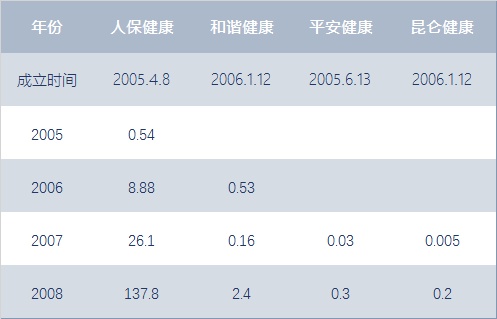
③ The health insurance can not be designed as dividend insurance because of its return guarantee function.
In 2003, the Actuarial Regulations of Individual Dividend Insurance stipulated that health insurance products should not take the form of dividends, which made commercial health insurance products focus on risk protection.
For the suspension of dividend-paying health insurance, the regulatory authorities give four reasons:
Health insurance is risky and complicated to manage, and it is more difficult to manage the dividend factor, which is not conducive to corporate risk control.
The main function of health insurance is protection, but the value-added function is not strong. Consumers should pay attention to its protection function when purchasing health insurance.
The suspension of dividend health insurance and the development of non-dividend health insurance are conducive to promoting the return of health insurance to the original intention of protection.
There is no dividend health insurance abroad, and foreign-funded companies have not offered dividend health insurance.
④ Formulate a unified definition of major diseases in the industry.
In 2006, the insurance industry association cooperated with the Chinese Medical Doctor Association to develop the definition of serious illness.
In April, 2007, the Standard for the Use of Disease Definitions in critical illness insurance was issued, which unified and standardized the expressions of the 25 most common diseases, and required that the products with serious diseases sold after August 1, 2007 must use a unified definition of serious diseases.
From the experience of countries all over the world, among many diseases guaranteed by critical illness products, there are 3-6 diseases with the highest incidence and claim settlement rate, and these diseases have the greatest impact on the price of critical illness products.
In order to give full play to the protection function and protect consumers’ rights and interests, the Standard for the Use of Disease Definitions in critical illness insurance stipulates that six core diseases (including malignant tumor, acute myocardial infarction, sequela of stroke, major organ transplantation or hematopoietic stem cell transplantation, coronary artery bypass grafting and end-stage renal disease) must be protected for products with severe diseases in adult stage.
The fourth feature: the premium is 50 billion, with an average annual growth rate of 36%, and the proportion of health insurance has doubled.
The premium of commercial health insurance has developed rapidly. After the premium exceeded 10 billion in 2001, it exceeded 50 billion yuan in 2008. By the end of 2008, the industry had accumulated 1.13 billion person-times, providing 5.26 billion yuan of health risk protection.
The premium of commercial health insurance increased from 2.8 billion yuan in 1998 to 58.55 billion yuan in 2008, with an average annual growth rate of 35.5%, which was higher than the growth of GDP and the average annual growth rate of personal insurance of 25.8%.
The payment of commercial health insurance increased from 1.1 billion yuan in 1999 to 17.53 billion yuan in 2008, with an average annual growth rate of 36%, which was higher than the average annual growth rate of personal insurance of 23.6%.
Premium and growth of commercial health insurance from 1998 to 2008
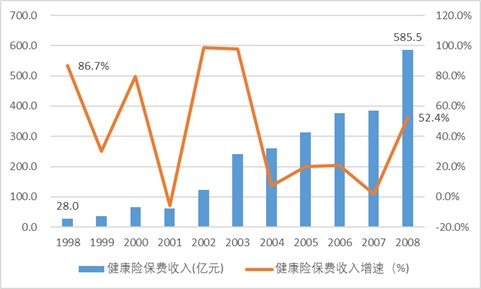
The proportion of commercial health insurance premiums in personal insurance doubled from 3.7% in 1998 to 7.9% in 2008.
Changes in the proportion of commercial health insurance in personal insurance from 1998 to 2008

The fifth feature: health insurance is deeply involved in social governance, and medical insurance management is integrated into the medical insurance system.
Since 2001, the insurance industry has taken advantage of its actuarial technology, risk management, claims technology and service network to participate in the new rural cooperative medical system and urban residents in Jiangyin, Jiangsu and Xinxiang, Henan in a socialized way.
By 2008, insurance companies such as China Life Insurance and Pacific Life Insurance had participated in the basic medical insurance in 142 counties (cities, districts) in Jiangsu, Henan, Guangdong and Fujian provinces, serving 34 million people and managing 2.62 billion yuan.
The "Jiangyin Model" in the Pacific Ocean and the "Luoyang Model" in China Life have been approved by state leaders and praised by all sectors of society. In addition, the insurance industry has carried out pilot projects of supplementary medical insurance in Xiamen and other places, and provided a large amount of supplementary protection for employees on the basis of basic medical insurance for urban employees.
A major feature of this stage: commercial insurance companies handle basic medical insurance, creating an operating mechanism that separates collection, management and supervision.
First, it is conducive to the establishment of incentive and restraint mechanisms and supervision and restraint mechanisms. By introducing commercial insurance companies to handle basic medical insurance, the separation of management and management is formed, so that government departments, insurance companies and designated medical institutions can perform their respective duties, which is conducive to establishing effective incentive and restraint mechanisms and inter-agency supervision and restraint mechanisms, and promoting the improvement of medical security operation mechanisms.
Second, it is conducive to the realization of the "benefit without cost" handling effect. By purchasing services, the government has reduced the pressure of setting up institutions and personnel, and changed "supporting people to do things" into "doing things without supporting people". At the same time, insurance companies strengthen the supervision of medical behavior and the control of medical expenses, and enlarge the efficiency of fund use. In the long run, by introducing competitive employment mechanism and moderate competition, the total government expenditure can be reduced and the effect of "benefiting without cost" can be achieved.
Third, it is conducive to improving service quality and giving play to actuarial advantages. Insurance companies give full play to the advantages of service level and quality, which is conducive to improving people’s satisfaction and government image. At the same time, give full play to the advantages of actuarial technology and assist the government to improve the basic medical insurance compensation and adjustment plan.
At this stage, with the comprehensive establishment of the basic medical insurance system and the growth of residents’ income, the total health expenditure has increased rapidly, from 367.87 billion yuan in 1998 to 1,453.54 billion yuan in 2008, with an average annual growth rate of 14.7%.
With the rapid development of commercial health insurance, the proportion of total health expenditure increased from 0.9% in 1999 to 4% in 2008. The proportion of commercial health insurance payment expenditure to personal health expenditure increased from 0.49% to 3%.
Proportion of commercial health insurance in total health expenditure from 1998 to 2008
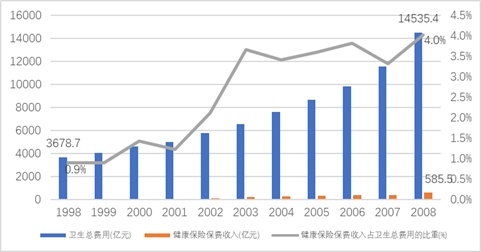
Proportion of commercial health insurance payment to personal expense burden from 1998 to 2008
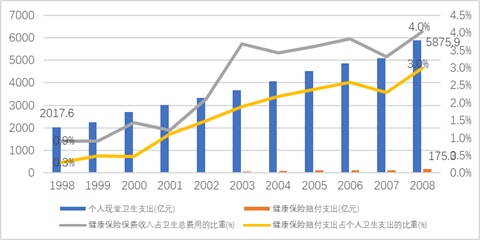
The sixth feature: the diversification trend of health insurance product types is obvious.
After 2000, disability income loss insurance and nursing insurance products came out one after another, and the types of health insurance products were diversified.
For example, in terms of medical insurance, the industry has launched high-end medical insurance to ensure globalization, which has the characteristics of comprehensive protection (not limited to directories and hospitals), high protection (generally more than one million) and excellent service (24-hour hotline service and global emergency rescue, etc.).
In critical illness insurance, the industry has launched anti-cancer special insurance.
In terms of disability income loss insurance, in November 2008, PICC Health launched "Jinfuli" group disability income loss insurance to protect the income loss of people disabled by diseases and accidental injuries in enterprises and institutions, so that they can maintain their living standards after disability.
In terms of long-term care insurance, in 2005, Cathay Life launched "Kangning Long-term Care Health Insurance", which is aimed at young and middle-aged people aged 18-55. By purchasing this product, the insured can prepare nursing care for the elderly when they are financially well-off and healthy.
three
-Insurance Today-
The third step in 38 years: 2009-2019
The new medical reform is superimposed on the new technology, and the health insurance has embarked on the fast lane for ten years, and the premium has reached one trillion, which has finally become the most important growth pole.
With the help of new medical reform and new technology, health insurance at this stage has entered a stage of rapid development.
In 2009, the "Opinions of the Central Committee of the Communist Party of China and the State Council on Deepening the Reform of Medical and Health System" was issued, which started the curtain of medical reform in China, and the policy dividend was released continuously. The development of commercial health insurance entered the fast lane and gradually became an important part of the medical security system.
For example, health insurance has become one of the "new forces" in medical reform by fully participating in major illness insurance, health insurance tax preference, long-term care insurance and basic medical insurance handling. The development of commercial health insurance at this stage presents seven characteristics.
The first major feature: at the level of national policy support, commercial health insurance is positioned as the "new force" of medical reform.
Since the new medical reform in 2009, the CPC Central Committee and the State Council have always attached great importance to the role of commercial health insurance in the multi-level security system, intensively issued a number of important documents to promote commercial health insurance, and clearly planned the positioning and development of commercial health insurance in a number of heavy documents.
"Opinions of the Central Committee of the Communist Party of China and the State Council on Deepening the Reform of the Medical and Health System" was promulgated and put forward:
Accelerate the establishment and improvement of a multi-level medical security system covering urban and rural residents, with basic medical security as the main body and other forms of supplementary medical insurance and commercial health insurance as supplements.
In 2013, the State Council’s Opinions on Promoting the Development of Health Service Industry planned commercial health insurance as the core area of health service industry.
In 2014, "Several Opinions of the State Council on Accelerating the Development of Modern Insurance Service Industry" positioned commercial health insurance as an important pillar of social security system, the main undertaker of individual and family business security plans, the important provider of health security plans initiated by enterprises and institutions, and the main participant in the market-oriented operation of social insurance.
In 2004, "Several Opinions of General Office of the State Council on Accelerating the Development of Commercial Health Insurance" positioned commercial health insurance as a "new force" in deepening the reform of medical and health system, developing health service industry and promoting economic upgrading and efficiency upgrading.
In 2016, the "Healthy China 2030" Planning Outline proposed to improve the multi-level medical security system with basic medical security as the main body and other forms of supplementary insurance and commercial health insurance as supplements.
The introduction of the above policies has provided important support for promoting the development of commercial health insurance and promoting the integration of commercial health insurance and basic medical insurance.
Sorting out the Important Policy Documents in 2009-2019
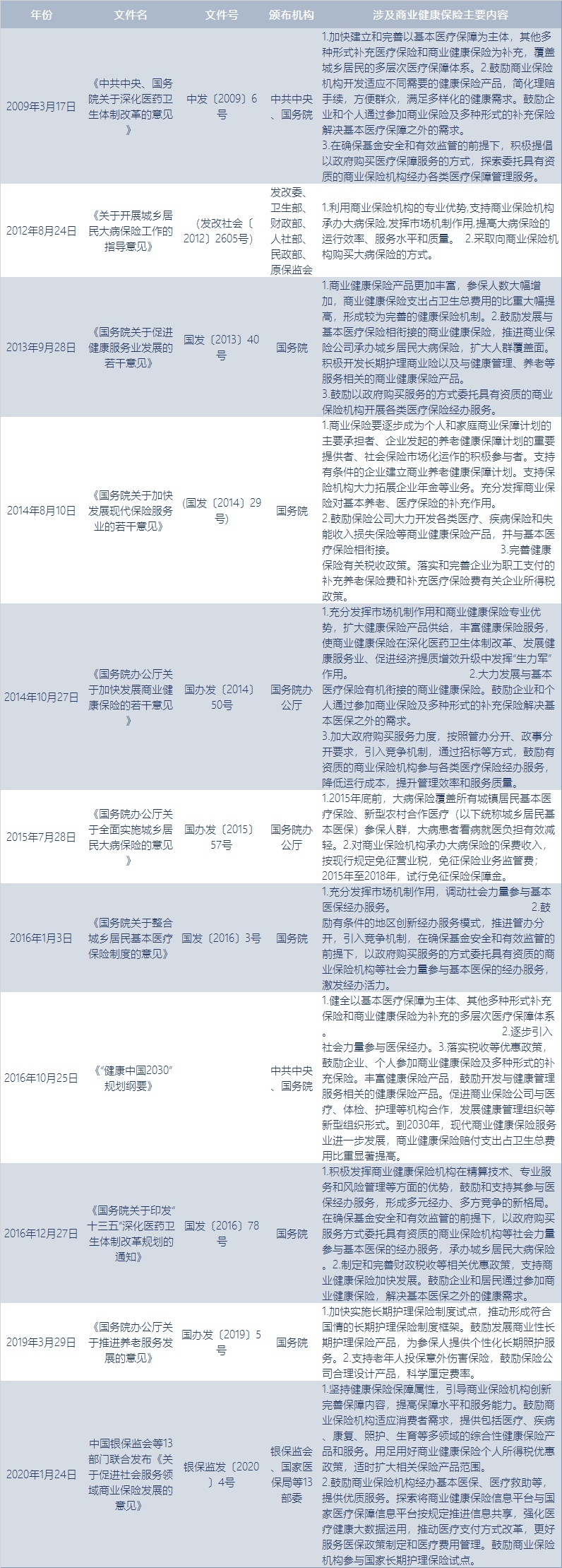
The second major feature: at the regulatory level, the newly revised Measures for the Administration of Health Insurance was issued, and it was positioned as an important part of the multi-level medical security system and an important field for the industry to serve people’s livelihood.
In order to further promote and standardize the development of health insurance, in December 2019, China Banking and Insurance Regulatory Commission issued the newly revised Measures for the Administration of Health Insurance. The main revisions and innovations are as follows:
First, health insurance is positioned as an important part of the national multi-level medical security system.
Second, on the surname "Bao" of health insurance, we insist on the guarantee attribute of health insurance, emphasizing that the purpose of developing health insurance is to improve the people’s health protection level, clarify the product characteristics and requirements of various health insurance products, and incorporate medical accident insurance into the scope of health insurance.
Third, in the health insurance surname "Jian", support the combination of health insurance and health management, provide services such as disease prevention and chronic disease management, reduce health risks and reduce disease losses.
Fourth, in the era of promoting industrial development and adapting to the times, health insurance products are encouraged to provide protection for new medical methods, new drugs and new devices, support medical progress and promote the development of health industry. Comply with the characteristics of the Internet era, and support the convenience of health insurance contract performance through digital technology and other means.
Fifth, in supporting the long-term medical insurance, it is clear that the long-term medical insurance can adjust the rate to cope with the rising medical expenses caused by the change of disease spectrum and the progress of medical technology, and support the development of the health insurance product structure in the long-term direction.
In order to standardize the development and sales of long-term medical insurance products with adjustable rates and protect the legitimate rights and interests of consumers, the General Office of China Banking and Insurance Regulatory Commission issued the Notice on Issues Concerning the Adjustment of Long-term Medical Insurance Products’ Rates on March 25th.
In addition, in 2013, the former China Insurance Regulatory Commission issued the Experience Incidence Table of Major Diseases in China Life Insurance Industry (2006-2010), including two tables of experience incidence of 6 diseases (male tables, female tables) and two tables of experience incidence of 25 diseases (male tables, female tables).
This table of incidence of serious diseases, which is used for product pricing and liability reserve evaluation, has played an important role in promoting the rapid development of critical illness insurance in recent years.
The third major feature: promoting the full coverage of major illness insurance for urban and rural residents and achieving strict supervision.
In August 2012, six ministries and commissions, including the National Development and Reform Commission and the former China Insurance Regulatory Commission, jointly issued the Guiding Opinions on Carrying out Serious Illness Insurance for Urban and Rural Residents, implemented the serious illness insurance system, and made it clear that serious illness insurance is an extension of basic medical insurance, an institutional arrangement to further protect the high medical expenses incurred by seriously ill patients on the basis of basic medical insurance, and adopted the way of purchasing serious illness insurance from commercial insurance institutions.
On July 22nd, 2015, the State Council Conference decided to fully implement the serious illness insurance for urban and rural residents. Li Keqiang, Premier of the State Council of the People’s Republic of China put forward:
Using part of social security funds to buy commercial insurance and enlarge the multiple advantage is a new path with characteristics and effectiveness that we have explored in medical reform.
The combination of social security and commercial insurance is a major innovation to continuously deepen medical reform.
Since 2013, the former China Insurance Regulatory Commission has successively issued the following documents: Rules for Compiling Solvency Reports of Insurance Companies-Answers No.14: Minimum Capital for Serious Illness Insurance for Urban and Rural Residents; Interim Measures for the Management of Serious Illness Insurance for Urban and Rural Residents of Insurance Companies; Notice on Exempting Insurance Companies from Supervision Fees for Operating Serious Illness Insurance for Urban and Rural Residents; Statistical System for Serious Illness Insurance, etc., to strictly supervise insurance companies’ serious illness insurance business, while reducing solvency requirements and exempting supervision fees. In addition, the former CIRC also instructed the insurance industry association to issue the "model clauses of medical insurance for serious illness groups of urban and rural residents (types A and B)".
In October 2016, the former China Insurance Regulatory Commission issued five systems, including the Interim Measures for the Bidding Management of Serious Illness Insurance for Urban and Rural Residents of Insurance Companies, which put forward more clear and detailed requirements for insurance companies to participate in the bidding management, service standards, financial accounting, risk adjustment and market withdrawal of serious illness insurance, and promoted the comprehensive promotion of the serious illness insurance system to standardization and perfection.
Regulatory requirements of the former CIRC on major illness insurance for urban and rural residents

In March 2013, the former China Insurance Regulatory Commission announced the list of major illness insurance business qualifications, and a total of 34 insurance companies obtained business qualifications (17 personal insurance companies and 17 property insurance companies).
In February, 2019, China Banking and Insurance Regulatory Commission adjusted the list of business qualifications for serious illness insurance according to the relevant regulations and the situation since the business was launched. There were 17 life insurance companies and 15 property insurance companies operating serious illness insurance. Five companies (Taikang Pension, Soochow Life Insurance, Auspicious Life Insurance, Lian Life Insurance and Guoyuan Agriculture) have newly entered the list, and another seven companies have been adjusted (mainly because they have not carried out serious illness insurance business after obtaining qualifications).
Through the serious illness insurance system, the actual reimbursement rate of seriously ill patients is increased by 10%-15% on the basis of basic medical insurance, which greatly alleviates the problem that urban and rural residents become poor and return to poverty due to illness. By the end of 2019, a total of 18 insurance companies had undertaken business, covering 1.16 billion people, and the premium scale exceeded 70 billion yuan.
The fourth feature: the introduction of tax-excellent health insurance system.
On May 6, 2015, the executive meeting of the State Council decided to give personal income tax preference to commercial health insurance on a pilot basis, and use more resources to better protect people’s livelihood.
Later, the Ministry of Finance, State Taxation Administration of The People’s Republic of China, the former China Insurance Regulatory Commission and other ministries and commissions issued the Notice on Launching the Pilot Work of Personal Income Tax Policy for Commercial Health Insurance and the Notice on Implementing the Pilot Work of Personal Income Tax Policy for Commercial Health Insurance, and determined the beneficiary groups, preferential standards, pilot areas, demonstration clauses and other matters.
The former CIRC issued the Interim Measures for the Management of Personal Tax Preferential Health Insurance Business, which clarified the requirements of insurance companies in terms of business qualifications, products, business, finance, system and information disclosure.
In January 2016, the former General Office of the China Insurance Regulatory Commission issued the Notice on Issues Related to Personal Tax Preferential Health Insurance Business and the Notice on the Official Launch of Commercial Health Insurance Information Platform, which clearly defined the issues related to personal tax preferential health insurance, put forward requirements for product approval, tax preferential identification code, business promotion, business supervision, online content of commercial health insurance information platform, online docking process with health insurance platform and communication mechanism, and officially started the pilot work of tax preferential health insurance.
Relevant ministries and commissions have implemented a number of documents on tax-preferential health insurance.

Since February 2016, the former China Insurance Regulatory Commission (CIRC) has published a list of six batches of 30 insurance companies that have obtained tax-excellent health insurance qualifications. Insurance companies that have obtained business qualifications actively develop exclusive products and promote the pilot implementation of tax-excellent health insurance policies.
On April 19th, 2017, the executive meeting of the State Council decided to extend the tax-preferential health insurance policy from 31 pilot cities to the whole country from July 1st, 2017. On April 28th, 2017, the Ministry of Finance, State Taxation Administration of The People’s Republic of China and the former China Insurance Regulatory Commission jointly issued the Notice on Launching the Pilot Work of Individual Income Tax Policy for Commercial Health Insurance, which extended the tax-preferential health insurance policy to the whole country.
By the end of 2019, there were 420,000 tax-excellent health insurance policies in effect, with a cumulative premium of 1.57 billion. Among them, in 2019, there were 342,601 effective policies (101,304 new effective policies), and the paid-in premium was 577 million yuan (304 million new effective policy premiums).
The fifth feature: the integration of "great health" continues to advance.
In-depth cooperation of "health insurance" and "health service": insurance companies further strengthen cooperation with medical, physical examination and nursing institutions;
On the one hand, it provides health risk assessment, physical examination, health consultation and other services for the insured in health products;
On the other hand, by exerting the control power of the payer, strengthening the supervision of medical behavior and controlling medical expenses, and promoting the standardization of medical service behavior.
Capital investment of "insurance fund" and "health industry": By investing in the health industry, insurance companies can build a "big health" industrial chain, service chain and ecological circle covering health insurance, health services, medical care and old-age communities, effectively extending the space for health insurance protection, service and investment, which can not only promote the development of main business, deepen service connotation, strengthen risk management and control, but also extend the investment chain, form diversified profits and enhance competitive advantage.
"Great health" has become an important strategic choice for major insurance companies to establish and consolidate their competitive advantages.
For example, Taikang Group built a "big health industry ecosystem".
China Life established the Big Health Industry Fund and started to build a healthy layout of "insurance+medical care";
Ping An Group focuses on the two strategies of "big financial assets" and "big medical health".
Reverse cross-border aspects of "health industry" and "health insurance": health service giants have started the extensive layout of medical health industry, such as Fosun Group’s cross-border entry into the health insurance market and obtaining the license of professional health insurance company; Companies such as Mei Nianda Health are also actively applying for health insurance company licenses.
Through the layout of commercial health insurance, it interacts with medical insurance fee control, chronic disease management and disease prevention, which may lead to a new business model.
The sixth feature: critical illness insurance and millions of medical insurance have become popular types of insurance.
(1) critical illness insurance continues to enrich.
For insurance companies, critical illness insurance has high new business value, is easy for sales staff to sell, and the average premium is appropriate, which is easy for customers to accept, and has become the main sales product of the industry security category.
During this period, the number of critical illness insurance products of various insurance companies generally follows the practice of "the more the better" (the incidence of 25 standard critical illnesses exceeds 95%), and the proportion of products with 70-100 types of critical illness has increased significantly.
At the same time, companies have launched multiple (the insured diseases are divided into several groups, and each group of diseases can be paid once) and multiple (the insured diseases can be paid multiple times without grouping) products.
In addition to severe cases, the responsibilities of mild and moderate diseases are introduced. On March 31st, 2020, the insurance industry association solicited opinions from the industry on the Revised Code for the Use of Disease Definitions in critical illness insurance (Draft for Comment), introduced the definition of mild diseases for the first time, improved and expanded the original definition of 25 severe diseases to 28 severe diseases and 3 mild diseases, and appropriately expanded the coverage.
② Million medical insurance has become a product of online celebrity.
Millions of medical insurance is a major innovation in the commercial health insurance market in recent years. By setting a higher out-of-pocket amount (generally 10,000 yuan), expanding leverage and increasing the amount of protection, the shortcomings of high medical expenses in the medical security system are made up.
This product provides a higher insurance coverage at a lower premium, which is of great significance to meet the people’s medical security needs and improve the market structure of health insurance products.
Millions of medical insurance products have simple design and clear product responsibilities, and are mainly sold through the Internet platform, which conforms to the consumption habits in the Internet era, which is one of the reasons for its rapid development.
In 2018, the premium scale reached 17 billion yuan, and it is expected to reach about 30 billion yuan in 2019.
The seventh feature: health insurance has become an important growth pole and business sector in the insurance industry, accounting for a significant increase in the total health expenditure and personal health expenditure.
In recent years, the premium of commercial health insurance has developed rapidly. After the premium exceeded 100 billion yuan in 2013, it exceeded 200 billion yuan, 400 billion yuan and 500 billion yuan in 2015, 2016 and 2018.
By the end of 2019, the industry health insurance premium exceeded 700 billion yuan.
It took 12 years (from 2002 to 2013) and 2 years (from 2013 to 2015) for the health insurance premium of the insurance industry to reach 100 billion yuan. At present, the annual net growth is hundreds of billions of yuan.
The premium of commercial health insurance increased rapidly from 57.4 billion yuan in 2009 to 706.6 billion yuan in 2019, with an average annual growth rate of 28.5%, much higher than the growth of GDP and the average annual growth rate of personal insurance of 13.9%.
The proportion of commercial health insurance premiums to personal insurance increased from 6.9% in 2009 to 23.2% in 2019 (see Table 12), and the proportion increased significantly.
At the same time, the density and depth of commercial health insurance have been significantly improved, from 43 yuan per person and 0.16% in 2009 to 504.7 yuan and 0.71% in 2019.
The compensation amount of commercial health insurance increased from 21.7 billion yuan in 2009 to 235.1 billion yuan in 2019, with an average annual growth rate of 26.9%, which was 15.2% higher than that of personal insurance. The proportion of commercial health insurance claims to personal insurance has also increased from 14% to 36.8% (see Table 14).
Regardless of the proportion of business or compensation, commercial health insurance has become an important growth pole and business segment of personal insurance.
The growth of commercial health insurance and the proportion of personal insurance in 2009-2019
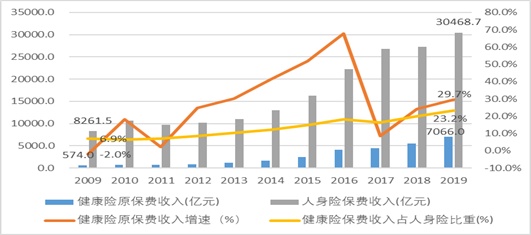
Density and depth of commercial health insurance in 2009-2019
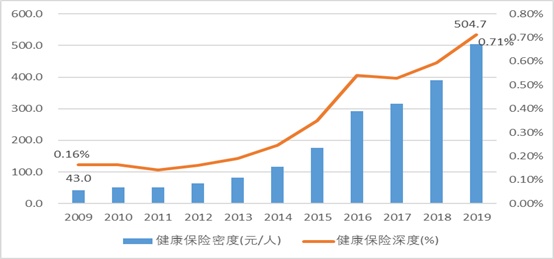
Payment of commercial health insurance and proportion of life insurance in 2009-2019
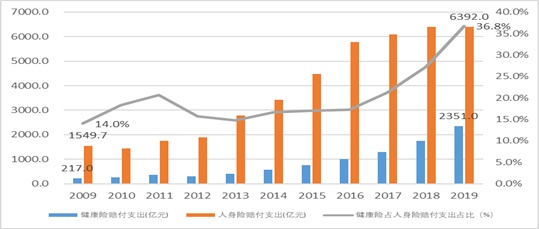
The proportion of commercial health insurance premiums in total health expenditure increased from 3.3% in 2009 to 9.4% (see Table 15). The proportion of commercial health insurance claims to personal health expenditure increased from 3.3% in 2009 to 10.3% (see Table 16). The value of commercial health insurance in the financing and payment of total health expenditure has been strengthened year by year.
Proportion of commercial health insurance premium to total health expenditure in 2009-2019
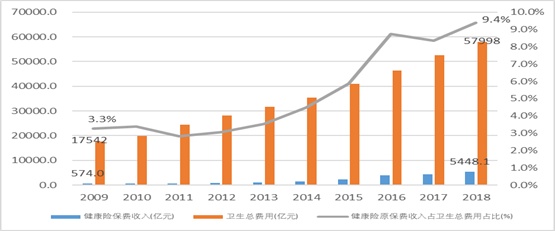
Proportion of commercial health insurance payment to personal health expenditure in 2009-2019
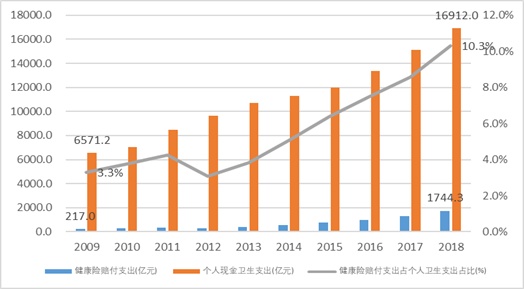
The proportion of commercial health insurance premiums in basic medical insurance (including urban workers, urban and rural residents and the new rural cooperative medical system) fund income increased from 12.4% in 2009 to 30.3% (see Table 17). The proportion of commercial health insurance claims in the basic medical insurance fund expenditure increased from 5.8% in 2009 to 11.8% (see Table 16). By the end of 2019, through the development of critical illness insurance and other businesses, the insurance industry has accumulated more than 1.1 trillion yuan of long-term health insurance risk reserve for the insured.
Commercial health insurance accounted for the proportion of basic medical insurance in 2009-2019.
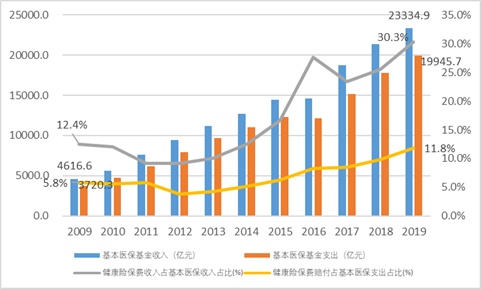
four
-Insurance Today-
Based on the current trillion-dollar period, this paper analyzes the five characteristics of health insurance business in 2019.
In 2019, China’s health insurance premium income was 706.6 billion yuan, a year-on-year increase of 29.7%, accounting for 23.2% of the personal insurance business, an increase of 3.2 percentage points over the previous year. The following is a multi-dimensional analysis of the data related to health insurance business in 2019, and summarizes five characteristics.
The first feature: the scale of health insurance premium is expected to reach one trillion yuan in 2021, exceeding the scale of auto insurance, and it will keep pace with property insurance in 2025.
According to the current premium growth rate, it is estimated that the scale will reach one trillion yuan in 2021.
In the past five years, the average annual growth rates of health insurance, auto insurance and property insurance were 30.8%, 7.2% and 9.9%, respectively. According to this rate, health insurance premiums are expected to exceed auto insurance in 2020 (at the latest in 2021).
Meanwhile, from 2015 to 2019, the ratio of commercial health insurance to property insurance increased from 30.2% to 60.7%. China Banking and Insurance Regulatory Commission and other 13 ministries and commissions’ Opinions on Promoting the Development of Commercial Insurance in the Social Service Field put forward that commercial health insurance will exceed 2 trillion yuan by 2025, and the average annual growth rate will be maintained at 19% in the next six years.
It is expected that the business scale of commercial health insurance and property insurance will basically keep pace.
The growth of commercial health insurance, auto insurance and property insurance in recent five years
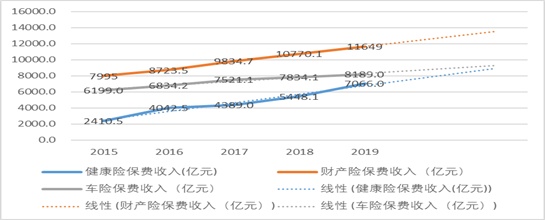
In fact, in the first two months of 2020, health insurance premiums have surpassed auto insurance premiums, and the leading edge has reached 30 billion yuan.
The second feature: health insurance premiums of personal insurance companies account for nearly 90% (among which professional health insurance companies account for about 5%). In recent years, property insurance companies have grown faster, and the introduction of long-term medical insurance may change the trend.
In 2019, in the commercial health insurance business, the premiums of life insurance companies were 622.57 billion yuan, accounting for 88.1%; The premium of property insurance companies was 84.03 billion yuan, accounting for 11.9%.
In recent years, large property insurance companies (such as PICC P&C) have vigorously developed government medical insurance business, while Internet property insurance companies such as Zhongan and Taikang Online have vigorously developed millions of medical insurance, which has greatly promoted the development of short-term health insurance business.
In the past three years, the premium growth of health insurance business of property insurance companies has exceeded that of life insurance companies, which has promoted its proportion to increase continuously (the market share has increased by 4.4 percentage points in the past decade).
Because property insurance companies can only operate short-term health insurance business, but not long-term health insurance business, especially the regulatory authorities support the long-term health insurance. With the introduction of long-term medical insurance products by personal insurance companies based on the Notice on Issues Related to the Adjustment of Long-term Medical Insurance Product Rates, it is expected that some million medical treatments will be converted into long-term medical insurance products, which will have a long-term impact on the development of health insurance business of property insurance companies.
Proportion of commercial health insurance premiums of personal insurance companies and property insurance companies
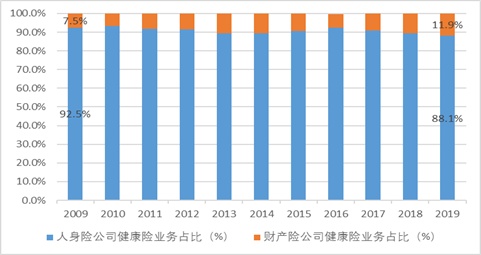
In 2019, the total premiums of seven professional health insurance companies (PICC Health, Ping An Health, Harmony Health, Kunlun Health, Taibao Allianz Health, Fosun United Health and Ruihua Health) were 34.37 billion yuan, accounting for 5.5% of the health insurance premium income of life insurance companies and 4.9% of the industry health insurance premium.
Among them, PICC health premium income was 22.42 billion yuan, accounting for 65.2% of health insurance companies.
The third feature: Long-term health insurance continues to grow rapidly, and the premium exceeds 400 billion yuan; Short-term health insurance has maintained rapid growth, with premiums exceeding 200 billion yuan.
In 2019, the long-term health insurance premium income was 467.85 billion yuan, a year-on-year increase of 26.6%, accounting for 66.2%; Short-term health insurance premium income was 238.74 billion yuan, a year-on-year increase of 36.3%, accounting for 33.8%.
In recent years, with the accelerated transformation of the industry and the strengthening of the development of security products, long-term health insurance (mainly in critical illness insurance) has developed rapidly; With the rapid development of urban and rural residents’ serious illness insurance and millions of medical insurance, short-term health insurance is also booming.
Proportion of long-term health insurance and short-term health insurance business
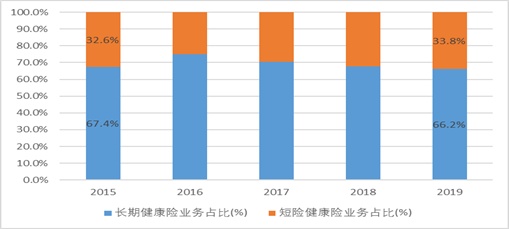
The fourth feature: health insurance is mainly personal business, accounting for 3/4; Group health insurance business accounts for 1/4.
Personal health insurance business continued to grow rapidly, further occupying a dominant position. In 2019, the premium income was 535.55 billion yuan, a year-on-year increase of 30.0%, accounting for 75.8%; The premium income of group health insurance business was 171.05 billion yuan, a year-on-year increase of 28.7%, accounting for 24.2%.
From 2015 to 2019, the proportion of personal health insurance business has further increased, mainly because it is mainly long-term health insurance, and the proportion of renewal business has gradually increased, which is conducive to its scale expansion.
Proportion of personal health insurance and group health insurance business

The fifth feature: health insurance is mainly sickness insurance and medical insurance, accounting for 99%; Nursing insurance and disability income loss insurance only account for 1%.
In 2019, from the perspective of business insurance, the premium income of sickness insurance was 455.23 billion yuan, a year-on-year increase of 28.1%, accounting for 64.4%. Long-term critical illness insurance products have both new single premium and renewal premium, which has snowballing effect.
Medical insurance premium income was 244.22 billion yuan, up 32.2% year-on-year, accounting for 34.6%, and it has maintained a growth rate of about 30% for five years.
In recent years, the comprehensive coverage of urban and rural residents’ serious illness insurance and the increase of premiums, as well as the rapid rise of millions of medical insurance, have promoted the rapid development of medical insurance business.
Nursing insurance premium income was 6.54 billion yuan, up 66.8% year-on-year, accounting for 0.9%.
Financial management nursing insurance products (the premium in 2016 was 120.8 billion yuan) which made rapid progress in previous years, with the background of strict supervision, rectification of short-term and medium-term products, and industry return guarantee, the premium has shrunk dramatically and basically withdrawn from the market.
The rapid growth of nursing insurance in 2019 was mainly due to the insurance companies’ extensive participation in the premium income of government basic nursing insurance.
The insurance premium income of disability income loss was 610 million yuan, a year-on-year decrease of 14.1%, accounting for 0.1%.
In recent years, the premium of disability income loss insurance has been between hundreds of millions, accounting for about 0.1%, which is basically negligible.
Proportion of four business types of commercial health insurance

postscript
Looking to the future, looking for 8 key links in the long-term development of 2 trillion health insurance.
From the practice of commercial health insurance for more than 30 years, the long-term development of health insurance needs double efforts:
On the one hand, it is necessary to strengthen professional ability and quality service to provide diversified and multi-level health care options for urban and rural residents;
On the other hand, it should be fully integrated into the construction of medical security system and get policy support.
The first key link: fully integrated into the construction of medical security system.
The establishment and perfection of the medical security system is an important driving force for the development of commercial health insurance, and the continuous improvement of the basic medical insurance system in China is also an important foundation and support for the medical security construction of commercial health insurance services.
In recent years, the insurance industry has significantly expanded its service field by comprehensively carrying out supplementary business and handling business of basic medical insurance.
Looking to the future, the insurance industry should participate in the basic medical insurance in more fields, with greater intensity and depth, and fully and deeply participate in the long-term care insurance, payment mode reform (DRG), flight inspection, medical insurance fee control and other handling services.
The second key link: the need for further policy support and development environment.
Commercial health insurance business has strong policy, which is highly related and closely linked with the medical security system. Therefore, only with the strong support of policies can the vitality of health insurance in generate be fully realized.
For example, the state has introduced a preferential tax policy for purchasing supplementary medical insurance, which has significantly promoted the development of the group health insurance market; Through the personal tax preferential health insurance policy, the residents’ awareness of protection has been significantly improved.
In the future, the development of health insurance still needs to fully rely on the joint efforts of government guidance and policy support and the market-oriented operation of insurance companies, so that more urban and rural residents can enjoy the diversified protection of health insurance. In fact, only by fully relying on the government to create a good development environment can health insurance achieve sound and rapid development.
At the same time, the development of commercial health insurance can effectively mobilize social resources to participate in the construction of the medical insurance system, prevent the people from pinning their hopes and hopes on the basic medical insurance system, release the pressure on the basic medical insurance system, and play the role of "stabilizer" and "pressure regulating valve" of the medical insurance system.
The third key link: need new technology+professional management.
Commercial health insurance is obviously different from life insurance business and property insurance business in product development, risk management and control, information system and customer service, so it must be professionally operated.
Risk management and control is the "lifeline" of the continuous operation of health insurance. It should be integrated into sales, underwriting, daily management, claims and other links to build a whole-process and all-round risk management and control system, so as to reduce the payout ratio of health insurance and improve operating efficiency.
The continuous development of innovative technologies will become a booster for the rapid development of the health insurance industry, which will promote development through innovative technologies represented by artificial intelligence, blockchain, big data and cloud computing at the customer, channel, operation, product, risk control and system level.
The application of new technology will bring about changes in health insurance sales, risk control, system and management service mode. Personalized, scene-based, inclusive and mutual-aid health insurance products are expected to accelerate development.
The fourth key link: to play a greater role.
With the acceleration of aging society and urbanization, the continuous improvement of people’s living standards and the release of medical security needs, the health insurance market has great potential.
Therefore, the industry should further increase the input of resources and improve the management level and professional ability. The role of health insurance includes five aspects:
First, an active participant in the socialized operation of basic medical insurance;
Second, the main undertaker of personal and family business health protection plan;
Third, it is an important provider of enterprise business health protection plan;
Fourth, it is a powerful promoter of the rapid development of health service industry;
Fifth, a staunch supporter of the construction of "Healthy China".
The fifth key link: increase tax support and release the market potential of health insurance.
Preferential tax policy is the main lever to promote the development of health insurance, which can transform potential demand into real purchasing power. Encourage society, enterprises and individuals to pay close attention to health protection and release effective demand;
First, comprehensively summarize and sort out the pilot practice of tax-preferential health insurance, improve policies, expand product range, make full use of tax-preferential leverage, and expand more and better health insurance products to the tax-preferential scope.
Second, it is suggested to further clarify the definition and coverage of "supplementary medical insurance" in the enterprise tax preferential policy, and to study and further improve the tax preferential ratio.
The sixth key link: deepen medical insurance cooperation and improve the healthy development of commercial health insurance.
① On the basis of effectively protecting personal privacy and information security, integrate and establish a medical data sharing and updating mechanism, and build a "big data" platform for medical health, so that commercial insurance can play its actuarial advantage and realize scientific pricing.
② The Opinions on Promoting the Development of Commercial Insurance in Social Services proposes to explore the information sharing between the commercial health insurance information platform and the national medical insurance information platform according to regulations. It is suggested that the relevant ministries and commissions of the state should speed up the implementation of policies, promote commercial insurance institutions to catch up with the "National Medical Insurance Information Expressway", realize one-stop settlement of commercial insurance, facilitate customers, reduce the transaction cost of claims, strengthen the application of medical and health big data, enrich risk control means and improve the efficiency of fee control.
(3) As the main third-party payment institution, give play to the restrictive role of health insurance on medical services and medical expenses, and support it to participate in hospital quality supervision and evaluation, medical service pricing and other activities, so as to form a joint force of supervision with social medical insurance and optimize the utilization efficiency of medical resources.
The seventh key link: realize the transformation of government functions and promote the participation of commercial insurance in basic medical insurance management.
According to the new institutional economics, the key to decide whether the government directly produces or buys services in the market is the transaction cost.
Expenditure on public goods does not mean that costs and benefits need not be considered, and the efficiency of government financial input should also be emphasized for social medical insurance. In the process of handling basic medical insurance, the insurance industry should give full play to its comparative advantages and enlarge the efficiency of the use of basic medical insurance funds.
There are two main spaces for insurance companies to handle basic medical insurance: one is stock business, and the other is incremental business.
Therefore, we should take advantage of the opportunity to encourage the purchase of services and control the establishment of public institutions, and the industry should first participate in incremental business, and then gradually strive for stock business.
The eighth key link: vigorously develop various types of health insurance, and promote the health insurance from health protection to the combination of "health protection+health promotion"
In developed countries such as the United States, commercial health insurance, as an important payer of medical expenses, is changing its role from "passive claim settlement" to "whole process health management".
China commercial health insurance contributes to the strategy of "Healthy China", giving full play to the unique position of commercial health insurance in contacting customers, medical institutions, health management institutions and nursing institutions, providing customers with comprehensive protection products such as medical treatment, illness, rehabilitation and care, as well as all-round health care services, and taking the road of "health insurance". So as to achieve "the healthier the patient, the healthier the commercial insurance will be".
After nearly 38 years of development, commercial health insurance has once again shown the momentum of flying.
The above is only given to the 2 trillion health insurance in 2025.
(Source of this article: public information and industry exchange data compiled by the author)
This article was first published on WeChat WeChat official account: Today’s Insurance. The content of the article belongs to the author’s personal opinion and does not represent Hexun.com’s position. Investors should operate accordingly, at their own risk.
(Editor: Ji Liya HN003)







